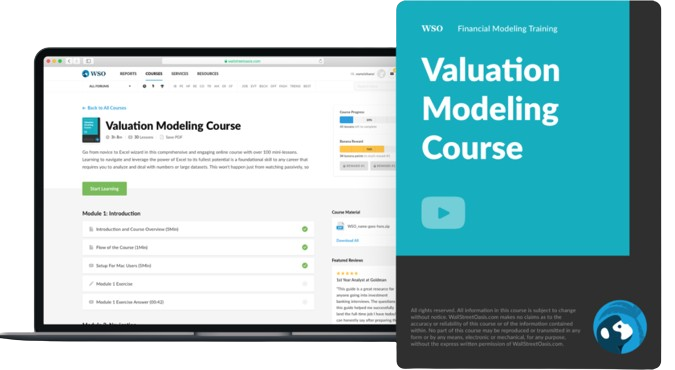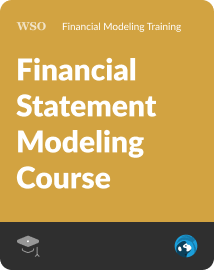Equity vs Fixed Income
A guide to equity and fixed income
overview of Equity vs. Fixed Income
Equity and fixed income are two major asset classes that investors can use to build a diversified investment portfolio. Equity represents ownership in a company, with returns from stocks. Fixed income involves lending money through debt securities.

Equity, also known as the shareholder’s funds, the owner’s equity, or the net worth of the firm and refers to the total amount of money that the shareholders will be entitled to receive after the liquidation of all assets and payment of entire debt commitments in the event of closure of a business.
Accounting Equation = Liabilities + Equity = Assets
So, the equity or stockholder’s equity should be Assets-Liabilities.
A firm’s equity in the event of business acquisition can be defined as the difference between the assets’ fair value and liabilities’ fair value.
For example, if a firm owns assets worth $100,000 and liabilities worth $65,000, the firm’s net worth can be determined by calculating the difference between the assets and liabilities, i.e., $35,000.
It can be found on the firm’s balance sheet and is used to assess a firm’s financial performance by calculating key ratios such as Return on Equity (ROE), DE ratio, and Return on Capital Employed, to name a few.
Moreover, equity financing refers to raising funds for day-to-day operations and meeting the liquidity needs of the organization by selling the company’s shares on a public stock exchange.
The people who purchase these shares are known as the organization’s shareholders, as they receive an ownership interest in the organization upon purchasing these shares.
Key Takeaways
- Equity is the residual value of a company's assets after deducting liabilities. It's vital for assessing a company's financial health and calculating ratios.
- Equity can be categorized as book value (historical cost) or market value (current market price).
- Fixed-income securities offer stable returns and low risk compared to equities. They include bonds, CDs, and government securities.
- Benefits of fixed income include portfolio diversification, steady income flow, and reduced risk.
- Different types of securities cater to various risk appetites and investment goals.
Classification of Equity-Based On Valuation
It can be classified into two categories based on their valuations as follows:
1. Book Value of Equity
In accounting, it is always listed on the balance sheet at its book value. The equation to calculate the equity in accounting is:
Assets = liabilities + capital
In this case, the value of the assets is calculated as the sum of the current and non-current assets. The asset portfolio of a firm comprises assets such as:
- Cash
- Accounts receivables
- Inventory
- Property plant and equipment
- Goodwill
- Intangible assets
To calculate the accurate book value of all the items mentioned above, an individual should have strong accounting foundations and financial statements interpretation skills.
The value of liabilities here can be calculated as the sum of the current and non-current liabilities of the organization. Liabilities of a firm include:
- Accounts payable
- Loans (short-term and long-term)
- Accrued expenses
- Deferred revenues, etc.
2. Market Value of Equity
In finance, it is generally conveyed at the market value, which can be higher or lower than the book value equity.
The main difference between recording it at book value and market value is that the book value is recorded at historical cost (backward-looking). In contrast, financial analysts aim to predict future trends, thus giving preference to the market value of equity.
The market value of publicly listed firms is easy to calculate as the matter can be determined by simply multiplying the number of outstanding shares by the market price of a share.
Private firms find it difficult to calculate the market value, so they employ professionals such as investment bankers and financial analysts.
Features of Equity
Sources of equity finance possess the following characteristics:
1. Income Received from Equity
An individual who invests money in a firm in the form of equity shares receives a right to the company’s disposable income through periodic dividends.
The shareholders receive no dividends if a company incurs a loss in a given financial year or does not earn enough profit. Still, there is always scope for earning higher income due to capital appreciation.
2. Voting Rights
Upon purchasing equity shares in a company, individuals become the firm’s stakeholders. This gives them the right to participate in shareholder meetings.
The shareholders, moreover, participate in the voting process to elect the organization’s board of directors and raise their opinions about the company’s executive decisions.
3. Limited Liability
Though the shareholders of an organization are classified as the organization’s owners, they possess the benefits of limited liability, which implies that their liabilities are limited to their investment in the firm.
This implies that the shareholders’ assets cannot be used to pay off company debt in the event of liquidation.
4. Asset Claim
Every individual investor in a firm has a right to claim the firm’s residual assets during an event of liquidation.
When the firm is liquidated, debt commitments and preference shareholders’ commitments are fulfilled first, and the remaining assets are distributed among the equity shareholders.
5. Liquidity
Equity shares issued by public corporations are highly liquid assets, which implies that the shares can easily be converted into cash. These shares are traded on public stock exchanges.
Due to a regulated market, the shares can easily be bought or sold during trading hours, offering high liquidity to investors.
Types of Equity Instruments
A few of the types are:
1. Shares
Shares refer to small units of ownership in the organization. These units are often traded on a public stock exchange from which investors can buy them.
Such instruments tend to provide voting rights to the shareholders and make them eligible to receive annual dividends based on the number of shares held by them. Returns from such instruments can be high, but they also bear high risk.
2. Equity Mutual Funds
Mutual funds refer to a pool of funds where individuals invest different amounts, and the fund manager invests the pooled money in other financial instruments.
Equity mutual funds are those types of mutual funds where at least 60% of the funds are invested in equity shares. These can be classified into the following categories:
- Large-cap equity funds: These funds tend to invest most of their resources in large, well-established companies that are typical to provide stable returns with lower risk.
- Mid-cap equity funds:Such funds invest in mid-cap firms with a balance in their risk-to-return ratio. Considerably riskier than the Large-cap equity funds.
- Small-cap equity funds:Small-cap funds invest money in small, growing firms that tend to offer higher returns but also bear high risks.
- Multi-cap funds: These funds invest money in firms operating in different sectors of the economy. Multi-cap funds invest in all the markets above depending upon the market conditions. If the market is favorable, then all of the above. If not, they depend upon the analysis.
3. Equity Futures
These are those financial instruments that carry an obligation for an investor to purchase the underlying asset at a predetermined price at a future decided date. Its trading is a lot more dynamic when compared to the cash market.
The reason for this dynamic market is that it facilitates the traders with the option to buy and sell short.
4. Equity Options
The holder of an equity options contract bears the right but not the obligation to buy (call option) or sell (put option) at a specific price on or before the maturity date.
This is the most common type of equity derivative. The traders and brokers can access NYSE America and NYSE Arca options.
Arbitrage activities refer to buying and selling financial instruments in different stock exchanges that profit from prices across other exchanges.
6. Alternative Investment Schemes
Investors can also aim to invest in different firms through:
- Venture capital
- Private equity
- Hedge funds
These are typically return-seeking and active strategies, having risk features.
What are Fixed Income Securities?
Fixed-income security refers to a form of investment option that aims to provide a return in the form of periodic interest payments and the return of the entire principal amount that was invested at the end of maturity of the security.
In simple terms, fixed income instruments are those financial assets that tend to pay the investor fixed interest or dividend payments at regular intervals.
Unlike equity, where the payments can fluctuate over a given time, the returns from fixed income securities are guaranteed to the investor, thereby making it a low-risk and low-return investment option used by investors to reduce their overall portfolio risk.
Although floating-rate securities are traded in the market where the periodic payments change according to the changes in interest rates, the prices for fixed-income securities do not fluctuate as the interest rate does not change.
Some of the most common forms of fixed income securities are bonds, certificates of deposits (CDs), and other money market instruments; however, different bonds carry an additional amount of risk, which is determined by the credit ratings of the bond.
Moreover, these fixed-income securities are generally backed by the US Treasury, so they tend to offer low and stable returns and bear low risk.
Companies generally raise capital for operations by issuing bonds which are known as corporate bonds, and these instruments are traded on public stock exchanges for risk-averse investors who aim to have a stable income and low risk.
Furthermore, fixed income security holders have a higher claim over equity shareholders, which implies that fixed income debts will be paid before the equity shareholder in the event of company liquidation.
Fixed income securities, thus, for a long time, have been considered to be financial instruments that help to diversify the portfolio risk, thereby earning maximum return at the lowest possible risk.
Features of Fixed Income securities
Some of the features of fixed income securities are:
1. Periodic Payments
Fixed-income securities tend to provide periodic payments in interest payments. These payments can be paid out annually, quarterly, or monthly.
Thus, such an investment option allows the investor to diversify the portfolio, thereby reducing the overall risk of the portfolio that is generated by equity investments and, thereby, providing stable income to the investor.
2. Higher Interest Rates offered than Savings Account
Fixed-income securities generally carry an interest rate of 3.5-4%, higher than the banks’ savings accounts.
As a result, parking funds in such securities can offer a higher rate of return than a bank’s savings account.
3. Tax Considerations
Income such as dividend income received from investment in such funds is considered an exempt income in the hands of the investor for the given financial year.
The company pays distribution tax for such payments, but the investor is exempted from such tax implications.
4. Low Risk to Return Ratio
Fixed-income securities are generally preferred by risk-averse investors or used by risk-loving investors to diversify the portfolio risk as the security carries a low risk. This implies that these securities offer low returns for bearing low risks.
Since investors are guaranteed fixed interest or dividend payments at regular intervals, these securities offer lower risk than equity shares, as firms are not obliged to pay dividends to the equity shareholders at the end of every accounting cycle.
Types of Fixed income securities
Fixed income securities can be classified into the following categories:
1. Treasury Notes
(aka, T-Notes) notes are those financial instruments issued by the US Treasury for maturity periods of 2, 3, 5, or 10 years. Generally carrying a face value of $1,000, T-notes pay interest or coupon payments semi-annually.
The current treasury yield for a bond of 10 years is 3.16%, and these instruments are practically risk-free instruments as they are backed by the credit worthiness of the US Government.
2. Treasury bond
Another fixed-income security offered by the US Treasury is the treasury bond which carries a face value of $10,000 and a maturity period of 30 years. An organization can acquire T-Bonds from the Treasury Direct, a bank, or a broker.
3. Debt Funds
A debt fund is a pool of money invested in different fixed-income securities, such as corporate bonds, debentures, and government securities.
These funds carry very low risk as the funds are not invested on public stock exchanges, and the investor receives regular interval payments.
4. Treasury Bills
These securities are short-term debt instruments that mature within one year and do not necessarily pay interest to the investor.
The investor, in this case, thus buys the bill at a discount (value lower than the face value) and makes a profit by selling the bill at face value at the maturity date.
5. Certificate of Deposits (CD)
CDs are short to medium-term instruments issued by the bank to an investor. The investor receives periodic interest payments upon depositing a certain amount with the bank.
The difference between CDs and savings accounts is that the interest rate in the case of CDs is generally fixed and does not fluctuate. In contrast, interest earned on savings accounts fluctuates according to the changes in the interest rate.
6. Debentures
They are market securities issued by large corporations to raise capital to fund their growth opportunities. Being debt security, it is recorded on the liabilities side of the balance sheet.
Similar to bonds, debentures are unsecured and carry a fixed interest rate paid to investors.
Advantages of Fixed income securities
Some of the advantages are:
1. Lower Risk
Fixed income assets generally bear lower risk than equity instruments as the returns are generally fixed against a benchmark interest rate, and the earnings are not volatile. They are thus preferred the most by risk-averse investors.
This form of investment is safer as the firm, during liquidation, by law, first needs to fulfill its debt commitments before paying the equity shareholders.
Moreover, since the risk of such instruments is determined by credit ratings that certain agencies provide, investors have an option to choose which kind of security would best suit their risk appetite.
2. Portfolio Diversification
Bearing a low correlation with equity instruments, fluctuations in the stock exchange does not directly affect the performance of fixed-income assets.
As a result, many investors use debt instruments to reduce the overall risk of their portfolio and thereby maximize the returns at a given level of risk.
2. Steady Income flow
As debt instruments make interest payments to the investors at regular time intervals (monthly, quarterly, and annually), this provides a stable cash flow.
Moreover, since the timing and amount of cash inflow are known by the investor beforehand, this helps the investor to plan their future expenditures accordingly.
3. Higher Asset Claims
Since fixed-income securities are debt instruments, they possess a higher claim over a company’s assets than the equity shareholder’s claims.
This implies that a firm’s assets will be used to repay the debts first before using the remaining assets to pay off the equity shareholders in the event of company liquidation.
Equity Vs. Fixed Income
Investors have a wide array of options for allocating their funds. Among these options, two prominent categories are equity and fixed-income securities.
Equity represents ownership in a company, while fixed-income securities involve lending money to an entity. Understanding the differences between these two can help investors make informed decisions tailored to their financial goals and risk tolerance.
This comparison highlights key distinctions between these two fundamental asset classes, aiding in informed decision-making based on your financial objectives and risk tolerance.
| Basis of difference | Equity | Fixed Income |
|---|---|---|
| Ownership | Investors in equities hold shares of ownership in a company, entitling them to a portion of the company's profits and potential voting rights. | Fixed income investors lend money to an entity, such as a government or corporation, and receive periodic interest payments along with the return of the principal amount at maturity. |
| Risk and Return | Equities generally offer higher potential returns over the long term but come with higher volatility and risk. Share prices can fluctuate significantly based on market conditions and company performance. | Fixed income securities are generally considered lower risk than equities. They provide predictable, regular interest payments, and the return of the principal amount is relatively secure, making them a preferred choice for more conservative investors. |
| Market Value | The value of equities can vary widely based on market sentiment, company performance, industry trends, and economic factors. | Fixed income securities tend to have more stable market values. Their prices can still fluctuate, but the changes are usually less dramatic than those of equities. |
| Investment Horizon | Equities are suitable for long-term investors who can withstand market fluctuations and aim to benefit from capital appreciation over time. | Fixed income investments are often chosen by investors with shorter investment horizons or those looking for a steady stream of income during retirement or other stages of life. |
When it comes to finance, choosing between equity and fixed income depends on personal circumstances and goals. Those seeking long-term growth despite market fluctuations may favor equities.
Conversely, individuals prioritizing stable income and lower risk might opt for fixed income. A diversified portfolio combining both offers a balanced strategy catering to various financial aspirations.
Equity and fixed income represent distinct investment paths with attributes and benefits. Recognizing these differences is vital for crafting an investment strategy that aligns with one's financial aspirations and risk appetite.
By comprehending the nuances of equity's ownership-based returns and fixed income's reliable income stream, investors can navigate the complex world of finance with greater confidence and clarity.
Researched and authored by Mehul Taparia | LinkedIn
Free Resources
To continue learning and advancing your career, check out these additional helpful WSO resources:










or Want to Sign up with your social account?